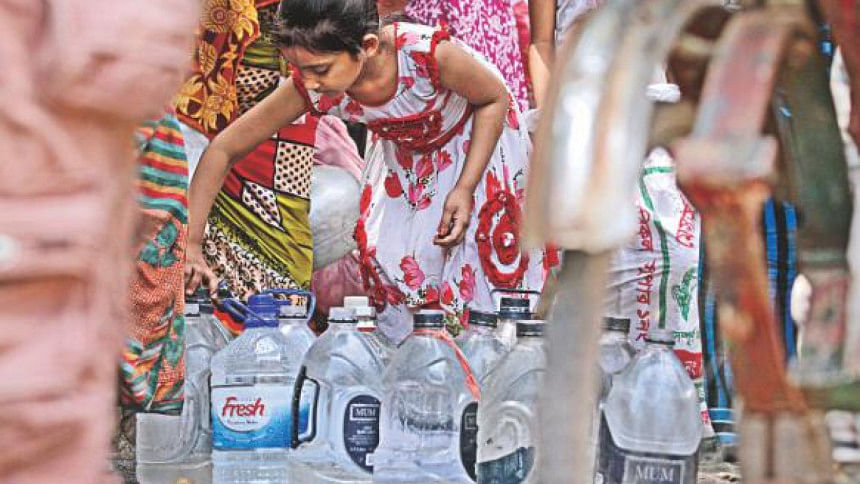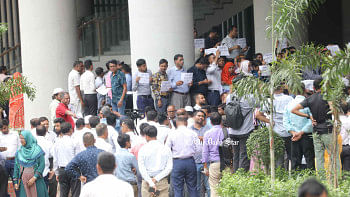World Water Day

We observed World Water Day yesterday with a stark reminder that safe potable drinking water is becoming scarcer by the day. According to a new report by WHO and Unicef Joint Monitoring Programme, however, as recently as 2015, 663 million people—one in 10—drank from unprotected sources. That includes Bangladesh where large numbers of people, especially in rural areas, extract drinking water from contaminated sources.
We have overcome numerous socioeconomic challenges in the short span of time since independence. Since the early 1990s, the installation of tubewells across rural areas of the country has provided drinking water for over 90 percent of the population leading to the decline of diarrheal diseases such as cholera.
However, widespread arsenic contamination of groundwater and decreasing levels of groundwater due to excessive extraction are some of the most pressing concerns today. Not only that, wastewater from industrial pollution is killing our rivers and water bodies, increasing amount of faecal sludge is filling up latrine pits and septic tanks, and rising sea level has led to saline water seeping into the surface water and groundwater along the coastal belt.
Needless to say, the ramifications of these issues are untold. There are immense risks to public health, food security, and the very livelihood of millions. Until and unless the government prioritises water management and governance in its agenda, not only will we remain far from achieving our national goals but also SDG 6, which demands to ensure availability and sustainable management of water and sanitation for all.

 For all latest news, follow The Daily Star's Google News channel.
For all latest news, follow The Daily Star's Google News channel. 



Comments